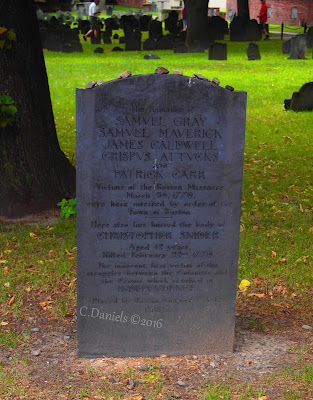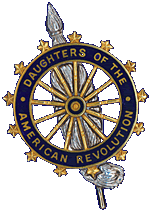"He has sent me to bind up the brokenhearted.....
to comfort all who mourn,
and provide for those who grieve in Zion
to bestow on them a crown of beauty
instead of ashes,
the oil of joy
instead of mourning,
and a garment of praise
instead of a spirit of despair.
They will be called oaks of righteousness,
a planting of the Lord
for the display of his splendor." Isaiah 61:1-3
The devastating fires that engulfed Gatlinburg Tennessee,
this past November, was a tragedy beyond words. Several lives were lost, and
countless homes reduced to ashes. That night was the stuff of nightmares. Viral
videos captured the unbelievable scenes of destruction, panic, and heroism. I
was not physically there that night, but I, and many of members of my family
were awake through the wee hours of the morning, praying hard for this place we
loved so dearly. Falling asleep finally, when we realized there could be no
more word until morning light provided a report of the devastation. So many
were praying for rain that night, and thankfully, the rains came. After seeing
the destruction first hand in December, I realize now how sweet those rains had been.
If they had not come, I firmly believe all would have been lost.
I cannot begin to describe how precious Gatlinburg has
been to our family. For multiple generations it has been a nearby sanctuary.
Always welcoming and peaceful, helping us forget the stresses of life, as we
literally climb closer to spiritual comforts: Like a balm, renewing our mind,
body, and soul. It has been a place of happiness, discovery, and love.
I have also been acutely aware of its sense of history
and timeless existence. Its mountains echo thousands of years of nature's
cycles: Its relatively short history of man, farming nearby valleys, harvesting
nature's bounties, and passing on of ancient traditions. If you have never
stood, barefoot, in the rushing mountain stream, and just listened to the
symphony of nature around you, then you have not fully lived.
For the past several years, our family has been fortunate
enough to spend Christmas in Gatlinburg. Each year, a week of family joy, surrounded
by one of our most dear places on earth. During the night of destruction, our
reservations for Christmas were a mere afterthought....we just prayed that
Gatlinburg would survive to see another Christmas. Miraculously, our little
corner of town survived, and we made the trek as planned, due to the pleas of the owner and local officials. Their message? "Please come visit!"
There were many false reports indicating that much of the
town was gone. Don't get me wrong. The loss is tragic. There are large pockets
of town that are no longer with us....but there are very large pockets that
survived! The main strip, for example, and most along River Road, have all
survived. It was comforting to see these places still standing - beacons of
hope and strength.
Our Christmas of 2016 was wonderful as always. Family and
relaxation, and a true sense of thankfulness that the rains had come that night
in November. Yet, along with the joy of Christmas, there was grief. Our family
had enjoyed a small group of cabins along the Roaring Fork stream for about a
decade. They were very much like second homes to us. We had heard reports that
they had been lost in the fire, but until we arrived to see for ourselves,
reality was still at bay.
One loss felt most poignantly, was a beautiful red barn,
tucked up along side of the mountain base, just across the stream. Local lore
said this was one of the first riding stables built in Gatlinburg for the use
of tourists back in the 1930s. Seasonally framed in the trees, this picture of
history will live on only in our memories, and the photos taken over the years.
The areas of destruction were sobering and heartbreaking.
They also served to remind us of the frailty of life, and the savage, unpredictability of nature. Yes, it was man that started the blaze that
destroyed so much life, but it was the winds of nature that carried embers in
strange patterns....burning some pockets, and turning abruptly in a split
second to spare a grouping just next door.
Many of the areas downtown are also still here today
because of the valiant efforts of so many firemen. After seeing the videos of
folks being flanked by burning forest on either side of their escape route, the
firemen were very much in danger that night, and they deserve medals of valor,
in my opinion.
As for the beauty rising from the ashes: I was encouraged
by other sights we witnessed. During the day, we can see the darkened earth and
scorched trees, sprinkled with ghostly chimneys standing as monuments to the
pre-fire days. But in the night, standing on the balcony of the condo rental, looking towards downtown, I could see pockets of light sprinkling the
hillsides. You could clearly see the areas that survived, and there were many
more than I expected. Sadly, there were large pockets of complete darkness, but
those surrounding clusters of light were perfect messages at Christmas. Beacons of hope,
reminding us all that Gatlinburg will survive, and flourish once again.
In fact, there were some parcels that had already
bulldozed the rubble and had framing already in place, as the sound of construction remained steady. This was a wonderful sign of new life. As we are reminded
that beauty comes from the ashes, I can't wait to see the spring growth take over. The area will rise stronger than before, as long as we continue to support its
people. The weather is warming up, and the blossoms are unfurling their
splendor. For those of you who share this heartfelt regard for Gatlinburg, get those reservations in - it's
time to come back!



























































